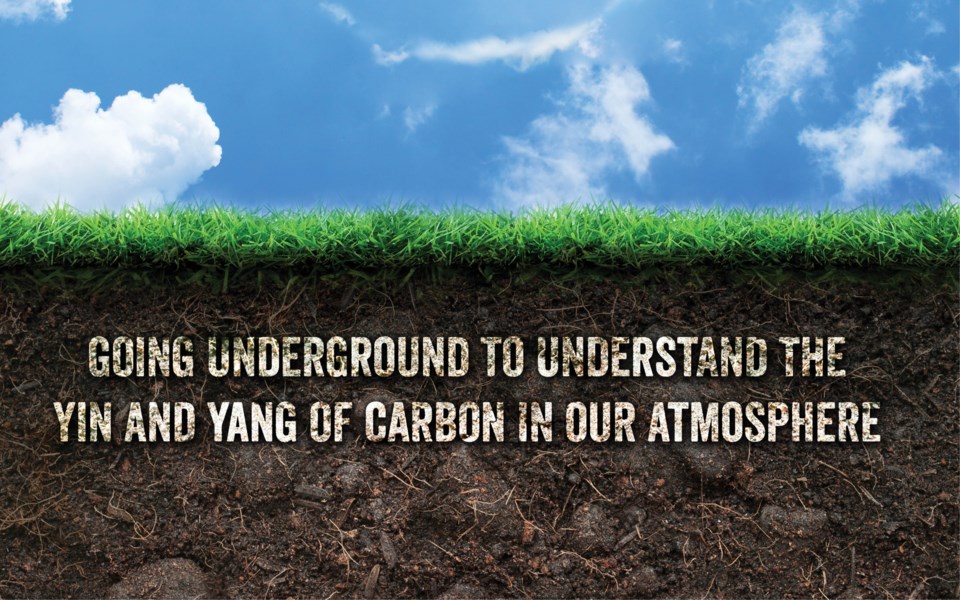
At the Rocky Mountain Biological Laboratory, the heat lamps that had been strung shoulder-high over five plots in an experiment called Warming Meadows were taken down last July. For 29 years, day and night, winter, spring, summer and fall, electric infrared radiators directed heat downward to warm the top 15 centimetres of soil by about two degrees Celsius.
Unique at its launch in January 1991, the experiment high in the Colorado Rockies was the world's first attempt to foretell the effects of global warming on the natural environment. The experiment assumed increased temperatures of two degrees, which will almost certainly occur by the middle of this century given the continued accumulation of greenhouse gases in the atmosphere. In fact, The Wall Street Journal on Jan. 20 reported the current broad consensus is that the world could warm by roughly three degrees by 2100. Some fear worse.
One impact on mountain communities demonstrated by the Warming Meadows experiment will be a shift in ecosystems. The shimmer and glow of a painter's palette that makes life in the Colorado mountains such a smile in July and August will be dulled by rising temperatures—the broad-leafed forbs that produce the rainbow of wildflowers will lose out to more muted sagebrush.
Soil carbon may yet be the biggest takeaway from this long-running experiment within sight of the ski lifts at Crested Butte only six kilometres away, though. Sagebrush stores less carbon underground than the wildflowers. This suggests potential for a global feedback loop. Will the warming climate cause more carbon to be transferred from the soil to the atmosphere in coming decades, which will in turn accelerate warming?
In a sense, climate change research has gone underground with this experiment—the results of which are as relevant to Whistler as they are to the mountains of Colorado. Sean M. Smukler, an associate professor at the University of British Columbia's department of Land and Food Systems, a frequent skier at Whistler Blackcomb and an avid mountain climber, says soil carbon should matter to anybody in Whistler who appreciates the current climate of snowy winter and great summer weather.
Keeping carbon in the soil is one challenge, and even better would be to find ways to remove atmospheric carbon and get it into the soil. If that can happen, he says, "the chances for skiing at Whistler for the next 100 years will be much greater."
As for the experiment in Colorado, it provides an analogue for Whistler. "The climate is changing rapidly and we don't have enough of an understanding of the impacts," says Smukler, who remains very interested in the feedback mechanisms of global warming, which was at the core of the research in Colorado.
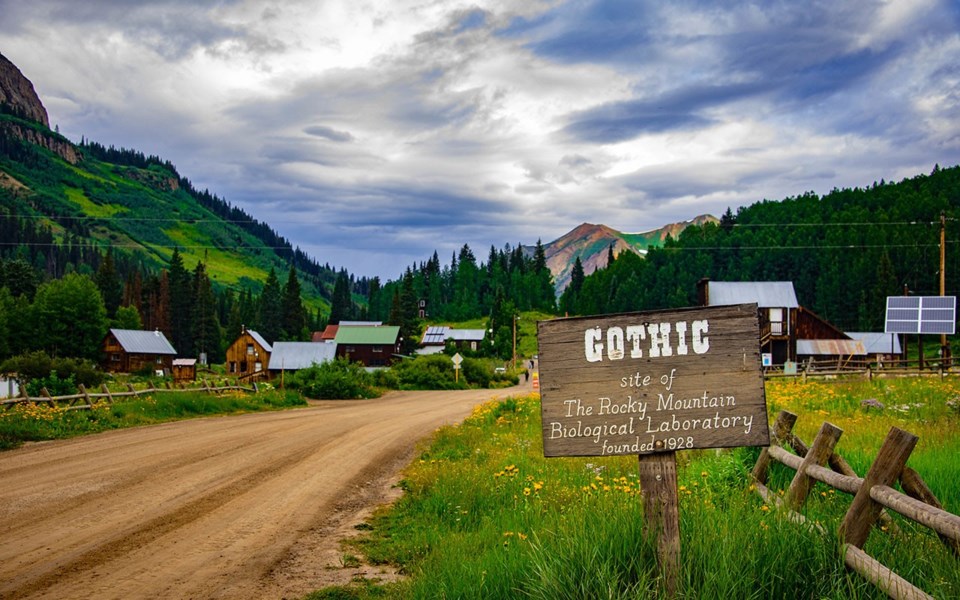
LOOKING BACK TO SEE INTO THE FUTURE
The laboratory itself is at a one-time silver mining camp called Gothic. The road to Gothic beyond Mt. Crested Butte remains unplowed in winter, when it is home to just four people. However, the population swells to 180 scientists, students and others during the lovely days of summer, with another 50 living nearby. They call the Rocky Mountain Biological Laboratory by its acronym, RMBL, which is pronounced like the sound of distant thunder: rumble. At any one time, about 200 experiments are underway at RMBL. None have gained the same attention as Warming Meadows.
Gothic can best be understood as a distant cousin of Aspen, which is located less than 20 kilometres away but across the Elk Range and among Colorado's highest, 4000-metre mountains. You can hike between the two in a day, even a long morning if you're young and strong. One of the notches you might cross is called Frigid Air Pass.
Aspen was a brilliant flash of wealth that began in 1879 and then dulled considerably with a recession in 1893. Many fine buildings were erected in that frenzied burst of affluence and energy, a time when Aspen also gained electrified streetlights when almost no one else west of the Mississippi had them. Crested Butte was mostly a coal-mining town, and mansions and giant stone buildings were rare in coal mining towns, no matter how striking the surrounding mountains.
Gothic was a different place altogether. Its optimistic energy was brief and shallow. By 1919, less than a year after the end of the First World War, a professor from a nearby college visited Gothic and, enchanted by the diversity of ecosystems, returned with students. In 1928, RMBL was founded. Professors and students have been returning ever since to conduct studies from these old mining shacks now supplemented over the decades by other, still modest offices and dormitories.
One study launched in 1962 was of the yellow-bellied marmot. The study first yielded a paper in 1968 and there has been a flood of scientific papers since, about 225 altogether. By the start of the 21st century, researchers noted that the marmots were emerging from hibernation 38 days earlier than they had about a quarter-century before. In 1971, David Inouye arrived to study bumblebees and hummingbirds and the sequences of wildflowers blooming. Other summer visitors included Paul Ehrlich, the professor at the University of California, Berkeley, famous for his 1968 book, The Population Bomb.
John Harte, also from Berkeley, a physicist turned ecologist, wrote his first paper about global warming in 1970. But, like other scientists, in the 1980s he had begun to ponder future effects of greenhouse-gas emissions being vented into the atmosphere from the combustion of fossil fuels and from land-use changes more deeply.
In the opening chapter of the 2019 book Ecosystem Consequences of Soil Warming, Harte wrote that "predicting future climate entails more than just knowing about the physics of heat and light, air and water. Ecosystems are a big player as well. Vegetation influences the physical stage on which climate plays out, and microorganisms regulate the gases that control energy flow in the atmosphere. And vegetation and microorganisms are controlled not only by climate, but by each other as well. In this truly complex system, as ecosystems are altered by climate, the climate is in turn altered.
"These feedback effects can only be understood and reliably incorporated into climate models if we first understand how ecosystems respond to climate change."
This "need to unravel this complexity, to characterize climate-ecosystem feedbacks" motivated him in 1988 to create the outdoor laboratory of warming at RMBL.
It was only coincidence, he says, that he was friends with Tim Wirth, then a U.S. senator from Colorado. Wirth, who had a vacation home at Crested Butte, was first elected to the U.S. Congress in 1974, in the wake of the Watergate scandal that caused Richard Nixon to resign. By 1988 he was in the Senate and an influential member of the Senate Committee on Energy and Natural Resources. The committee summoned Jim Hansen, a one-time farm boy from Iowa who by then directed NASA's Goddard institute for Space Studies in New York City.
"Global warming has reached a level such that we can ascribe with a high degree of confidence a cause-and-effect relationship between the greenhouse effect and observed warming," Hansen testified on a hot June day, beads of sweat on his face. The room's air-conditioning had malfunctioned. "It is already happening now," he said.
"Global Warming Has Begun, Expert Tells Senate," the 1988 New York Times reported the next day on its front page. The lead story that day, however, was about immigration. A new national law, the newspaper reported, had failed to stem the flow of immigration from Mexico.
In places like Aspen and Vail, people took note of Hansen's warning. It came during a hot summer in the Rockies, too. But for most people, the threat seemed so distant.
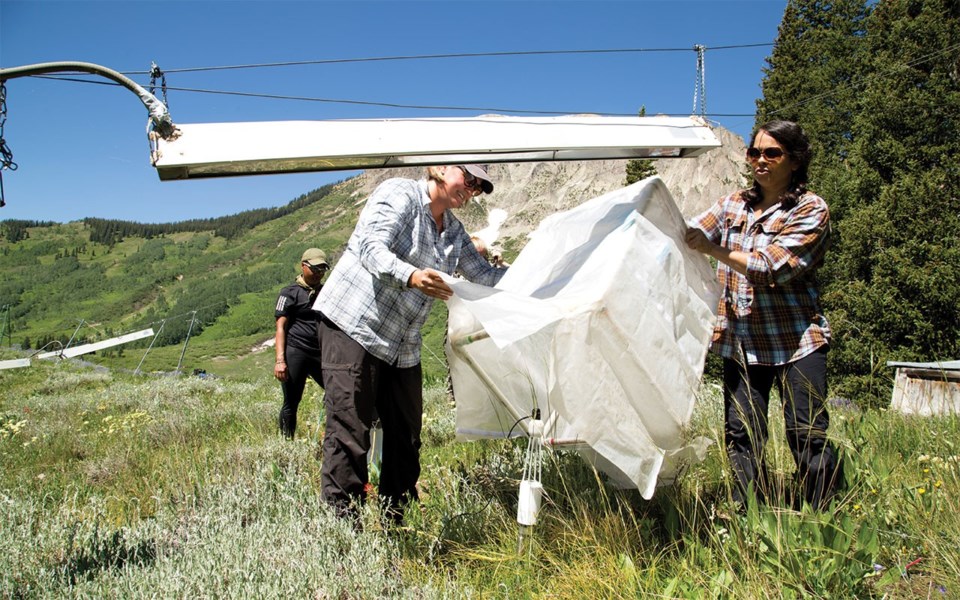
THE EXPERIMENT BEGINS
For Warming Meadows, Harte chose a ridge above the old mining town, maybe 100 metres away from the road to Crested Butte, and just on the south side of a pine forest. Being on the ridge was important to prevent delayed runoff of snowmelt from entering the five heated plots above. But there was also a small but detectable aspect gradient in each of the 10 plots, half to be heated artificially and half not.
But how to heat the plots? Harte says he hit upon the mechanism while at dinner in an outdoor restaurant in San Francisco in 1988. City streets there have received enough snow to make snowballs only once every few decades. It does chill, though.
Harte noticed the overhead heat lamps that repelled the cold evening fog. That soon had him searching through farm equipment catalogues. He settled on a product from Pennsylvania designed to keep piglets and chickens warm during winter in northeastern U.S. states. "Remarkably, our heaters have now endured 28 Rocky Mountain winters without failure," Harte wrote in Ecosystem Consequences of Soil Warming.
More difficult was deciding whether to attempt adjusting the heat directed toward the soil. "Under real global warming, the incremental rise in soil temperature can differ hugely across the seasons," he wrote. Achieving a steady two-degree Celsius rise in wet soil, for example, would require more heat. Instead, he chose a fixed level of heat, "mimicking, I hoped, the relatively constant infrared flux from the great big heater in the sky, otherwise known as incremental greenhouse gases. The variations in incremental soil temperatures would, I expected, be realistic, and in retrospect they were."
The heat also dried the surface soil 15 to 20 per cent, moisture being an important part of this investigation of global warming effects.
Outward changes came relatively quickly. When heating of the five plots began, all 10 plots had a mixture of forbs and woody shrub. Forbs are broad-leafed herbaceous plants, but not grasses. Think of a sunflower, primrose, or mountain bluebells. The woody shrub is sagebrush, a species common in colder, drier climates of the North American West.
The plots all had four times as many forbs as sagebrush covering the ground when the experiment began. A decade later, annual shrub production had overtaken forb production in the heated plots. And by Year 27 of the experiment, shrub production was three times greater than that of forbs. The ratios were nearly upside down.
The shift was not caused by migration of sagebrush from elsewhere, but rather infill by the existing sagebrush. That may be what happens elsewhere, too, and with different species, Harte suggests.
Crested Butte may soon need to tinker with its economy. Even by the 1990s, it had become a busier summer resort than a winter resort. It has arts shows, music festivals and a wildflower festival that this year will be held July 10 to 19. Crested Butte has been called the wildflower capitol of Colorado. The valley's verdancy gives way to sagebrush in the drive from Crested Butte and Gunnison, as the elevation drops and the montane ecosystem gives away to high desert, the annual precipitation decreases by more than half. At 2,400 metres elevation, Gunnison is to Crested Butte what Squamish is to Whistler, but in a sea of sagebrush, not an arm of the Pacific Ocean.
This shift from leafy green plants to woody shrubs also caused a shift in the surface shortwave albedo. Albedo is the percentage of solar energy striking a surface that is reflected away from the Earth. Snow reflects light more, while a black rock absorbs the sun's energy. The shift from the wildflowers to the woody shrub translated to more energy being absorbed, the equivalent of a 10-watt light bulb per square metre averaged over night and day during the growing season.
That's double the incremental energy absorbed as a result of the increased atmospheric carbon dioxide.
The effects of this increased heat on the plants were not uniform, however. Those forbs with more shallow roots consistently showed greatly reduced growth and physiological symptoms of moisture stress in the heated plots. Deep-rooted plants showed only a weak response to the heat.
"The idiosyncratic response of each species to environmental conditions reinforces our finding that there are likely to be changes in community composition as the planet warms," Harte wrote in his book.
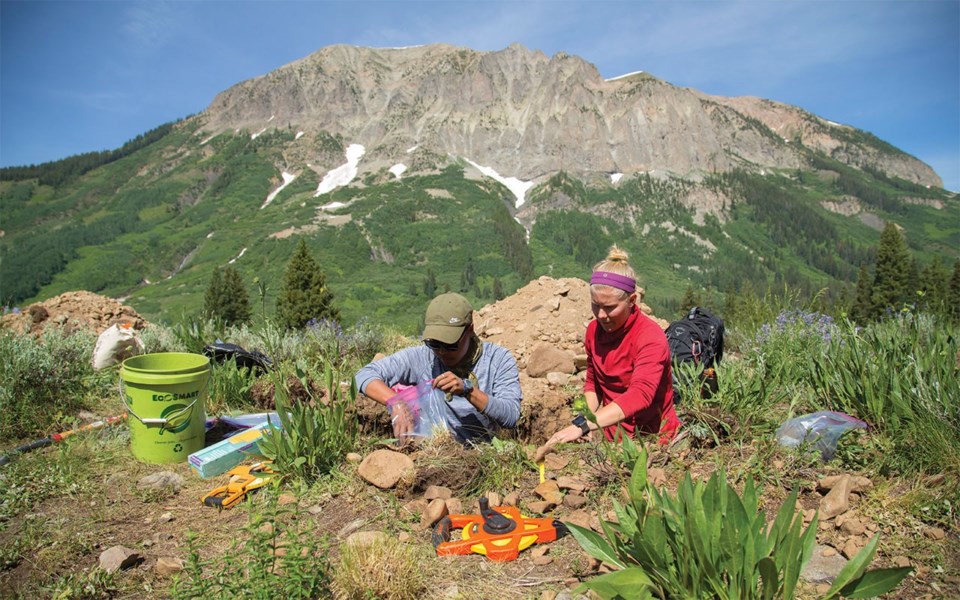
A REALISTIC VIEW OF GLOBAL WARMING
It gets more complex. The increased heat from the lamps accelerated the runoff of snow, lengthened the growing season and, in some cases, emboldened pathogens and herbivores. Again, the effect was not universal. Some pests actually did better in cooler or later-melting plots.
Even by 2014, a sufficiently long-time series was available to establish the statistical significance of the responses of the control, or unheated, plots. Those five plots without artificial heat had changed, a reflection of the changing climate broadly underway, but not as fast as those under the lamps created to warm chicks and piglets.
That, explained Harte in his book, "reinforces our confidence that our heated treatment of the plots provides a realistic preview of real global warming."
Crucial, he went on to say, was the nature of the experiment: heated plots paired with unheated plots. Without the artificial stimulation, it would have been impossible to say exactly what caused the changes in the subalpine meadows above Gothic. Many other things are at work, including acid deposition from distant coal-fired power plants, more intrusion from cross-country skiers, plus dust blown from deserts of the Southwest. Also, there could be natural cycles in the dominance patterns of vegetation.
The heated plots compared with the unheated plots makes it clear the effect of temperature increases during coming decades.
Harte clearly had hoped for a still-longer run at Gothic. Continued warming until 2050 could, he pointed out, predict climate effects in that ecosystem to the end of the century. But the costs, if not staggering, at about US$15,000 a year, including US$6,000 for electricity (produced mostly at coal-burning power plants), persuaded funders that it was time to move on.
SOIL–THE BIGGEST TAKEWAY
Study of the interaction between the soil and the atmosphere always was an important component of the Warming Meadows experiment. Soil stores 4.5 times the carbon compared to vegetation. Soils are to carbon what the Royal Bank of Canada is to loonies. But will the warming climate cause more carbon to be transferred from the soil to the atmosphere in the coming decades? That would accelerate warming. This is called a feedback loop.
It's perhaps like credit card debt. If you can't pay off your monthly debt, you accrue interest, which makes paying off the monthly charge even harder.
Research, underway even now from the Warming Meadows experiment, is expected to deliver the first good estimate of this response of deep soil carbon to warming. This new understanding will be used in global climate models to help predict what will happen in the mountains, not just in Colorado or B.C., but across the planet.
"Climate change can alter the quantities of carbon sequestered in plants and soil, resulting in feedbacks that either enhance or retard the anthropogenic buildup of atmosphere carbon dioxide," Harte explains in Ecosystems. "Such feedbacks are especially likely in montane and high-latitude ecosystems where soils are carbon rich, vegetation is sensitive to climate variables, such as snowmelt date and length of growing season, and climate change is expected to be large due to snow albedo feedback."
In July, after the power was cut off, a small backhoe tracked up the trail to the Warming Meadows plots to excavate one-by-two-metre pits. Sensors had all along kept track of heat and soil moisture relatively close to the surface. These pits were 1.5 metres deep.
The core question that motivated these pits was whether the soil carbon at this greater depth responded differently than that closer to the surface.
A secondary and related question is whether rising temperatures above ground alter interaction among the species living underground.
Scientists who gathered in July for about a month to collect samples were looking at 30 to 40 plant species and, depending how you define what constitutes a species, 30,000 microorganisms. "Microorganisms are very diverse," said Stephanie Kivlin when I talked with her in late August.
"We will have data about how they have shifted in their abundance with warming. Putting this all together will be really interesting, but this will take time."
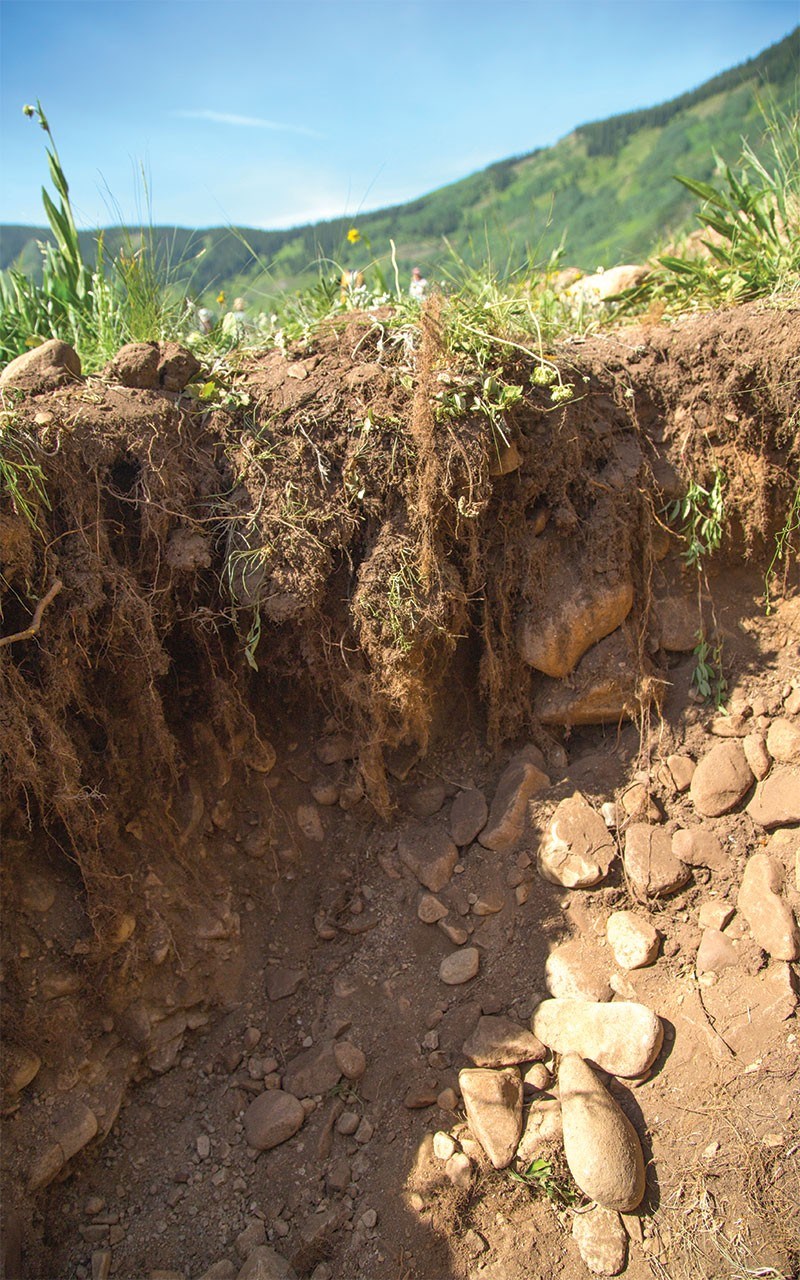
Kivlin first visited RMBL in 2010 as an undergraduate and, after earning her Ph.D. in 2012, now teaches at the University of Tennessee, Knoxville, in the department of ecology and evolutionary biology. Her research has taken her from measuring effects of global warming during a blizzard in Alaska to collecting soil cores during an earthquake in Costa Rica.
Her work and that of others since last summer, first in the field and then in the lab, may yield a high-profile paper during the next year (they hope for Science, the prestigious journal). The goal, she says, is to "understand how ecosystems are going to respond to warming. That includes plants above ground, plants below ground, and all the carbon and nutrients and microorganisms, including the carbon that plants are picking up from the atmosphere and putting into their roots. We want to understand how the entire ecosystem responds."
But again, the key to understanding what happens above ground lies in understanding the subterranean better. "Essentially we had to destroy the [Warming Meadows plots], but it's really important because half the carbon is stored below 20 cm."
Aimée T. Classen, another researcher at Warming Meadows, goes even deeper on the connection between soil and climate change. "I have always had an interest in soil, and it turns out that soil harbours a lot of carbon," she says. "It harbours more than the atmosphere or the terrestrial biosphere."
How will those tens of thousands of microorganisms in the soil react to warming temperatures? Will they absorb the atmospheric carbon through the roots of plants—or, perhaps, will they emit more carbon themselves? "I spend all my time thinking about this," says Classen, who directs the Aiken Forest Science Laboratory at the University of Vermont.
Classen taught middle school for three years as she nurtured her love of science, working weekends in a soil laboratory before returning as a student to earn a Ph.D. "It was such a neat mashup of ecology and chemistry," she says. Unlike the layperson, she understands something about "all these crazy microorganisms" that are part of the web of life, but even now the full extent of their diversity remains unknown.
Like others, she expects the post-Warming Meadows work to have long legs. "People around the world will use these data to build better climate-change models," she says.
WaRMING PATTERNS
Six years ago, a new effort was launched in the hopes of finding patterns in mountainous places across the world, to better detect general trends in the effects of warming or species loss on diversity and ecosystem function. It's called WaRM, which stands for Warming and (species) Removal in Mountains (some acronyms come easier than others).
Among the 11 cold-weather sites in the WaRM network around the globe is Kluane Lake, in the Yukon Territory. The chief investigator at that site, Jennie R. McLaren, who teaches at the University of Texas at El Paso, observes on her website that woody shrubs are replacing grasses in both tundra ecosystems and in the Chihuahuan Desert where she lives. But WaRM has not yet yielded a published study. It takes time for patterns to emerge.
Ian Billick has directed RMBL since 2002. He's a population biologist, with a special interest in ants. He first arrived as an undergraduate in 1988. That's the same year that Harte began scratching his head about the Warming Meadows experiment and the same year that Hansen warned the world, via his platform in the U.S. Senate, that climate change had arrived, and we'd better get after it. We didn't take his advice very seriously. About half the greenhouse gas in the atmosphere produced since the Industrial Revolution began two or three centuries ago have been emitted since Hansen's testimony.
Warming Meadows, says Billick, was the first of its kind and became a model that is now replicated in various forms and fashions around the world, such as WaRM. "It led the way for a type of research that is now very common," he says.
Warming Meadows cannot perfectly foretell the effects of warming on British Columbia and other regions. However, the intense study can "provide insights, even if not perfectly, that help us think about the entire world," says Billick.
By way of example, he points to work on human diseases that often start with fruit flies or mice. "Not because they are perfect models for humans, but because they are way easier and cheaper to start with. We can't study everything about everywhere, so places like Gothic serve as starting points that serve as a model for understanding all of the Earth's ecosystems," he says.
But finally, the big takeaway from Warming Meadows may well be what the scientists now at work are finding from the soil they retrieved in the pits dug after the heat lamps were removed.
"This will be the first good estimate of deep soil carbon response to warming," explains Billick. As such, it will be used to inform global climate models, which give us our best guesses about the future.
So, as you take your next hike out into the backcountry, consider that what lies underfoot may be just as interesting and important as what you see above ground.



